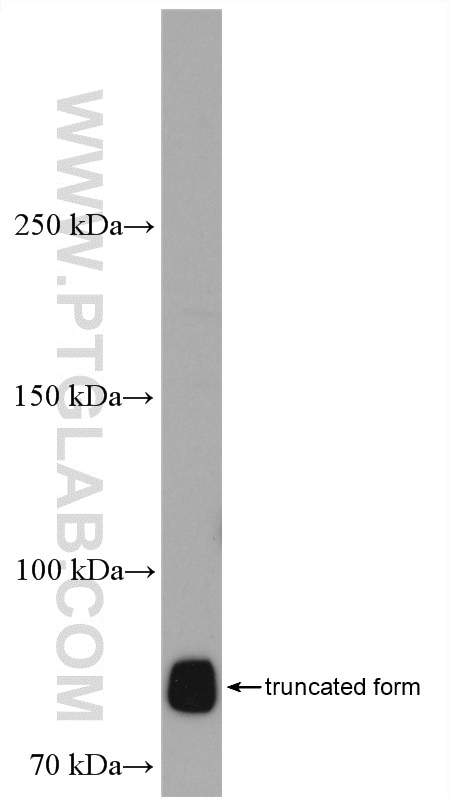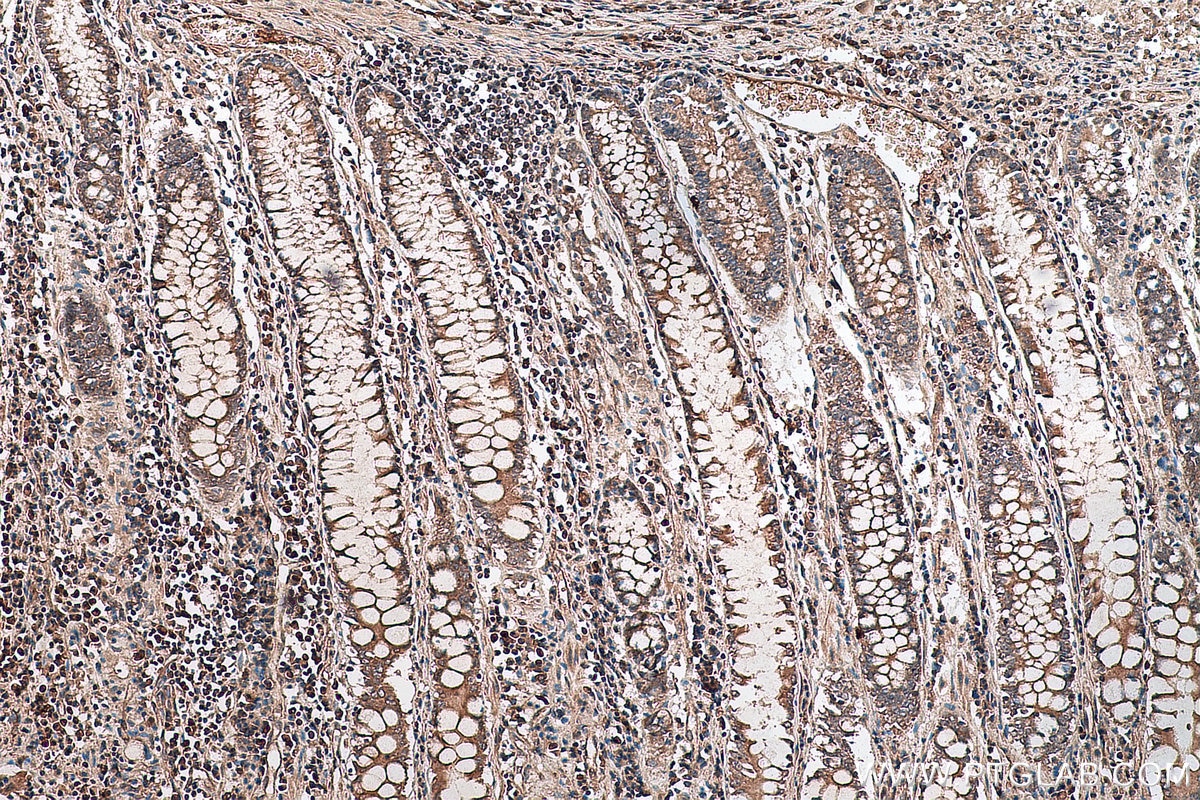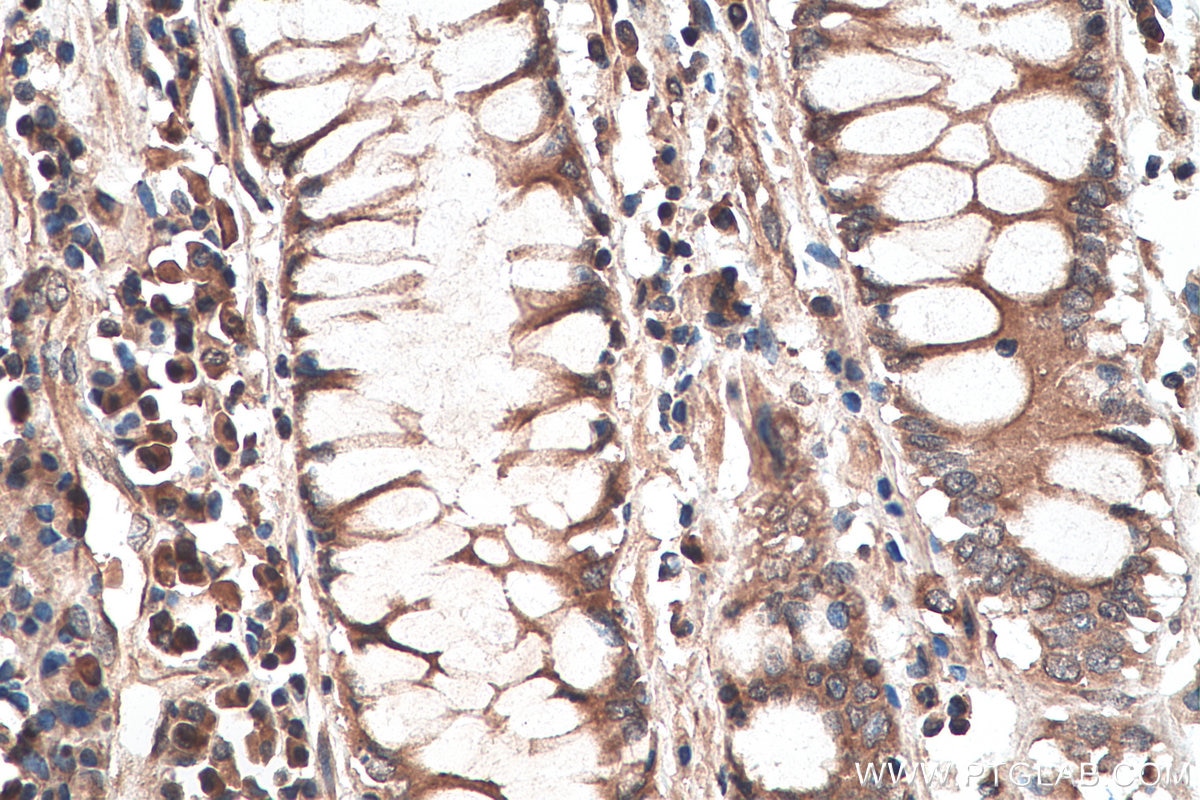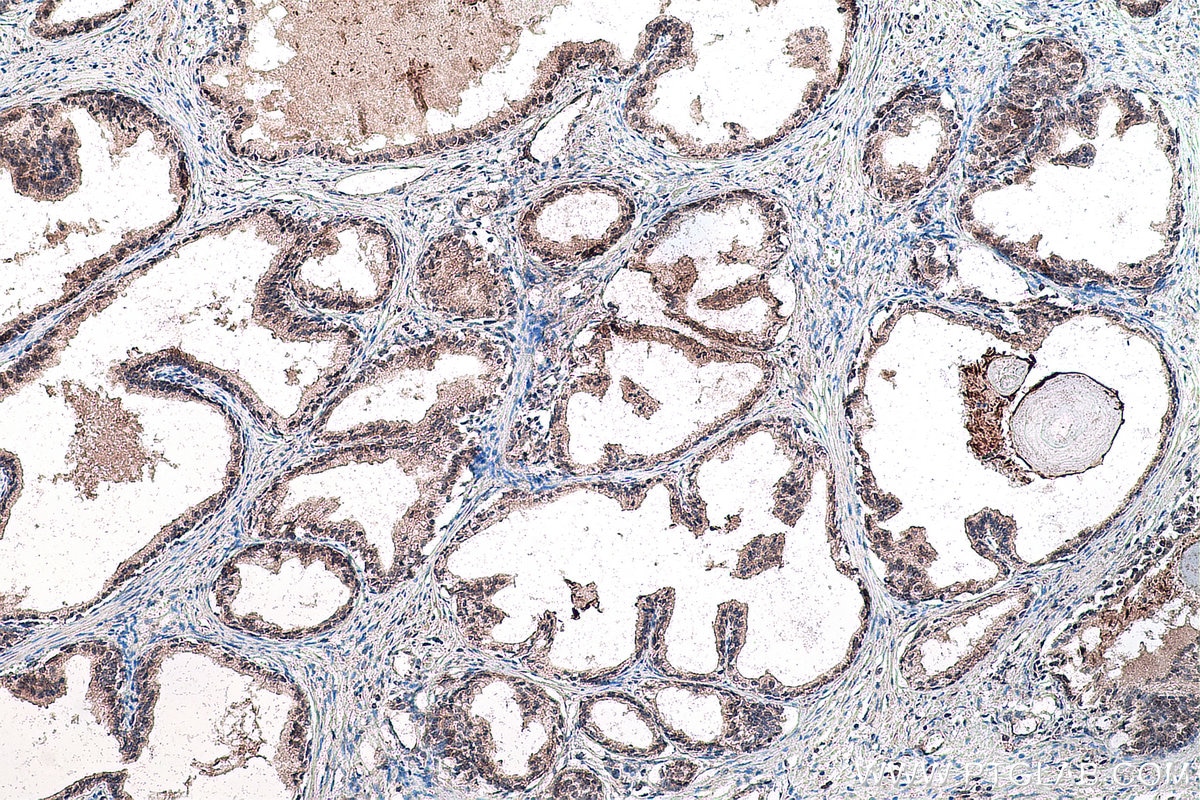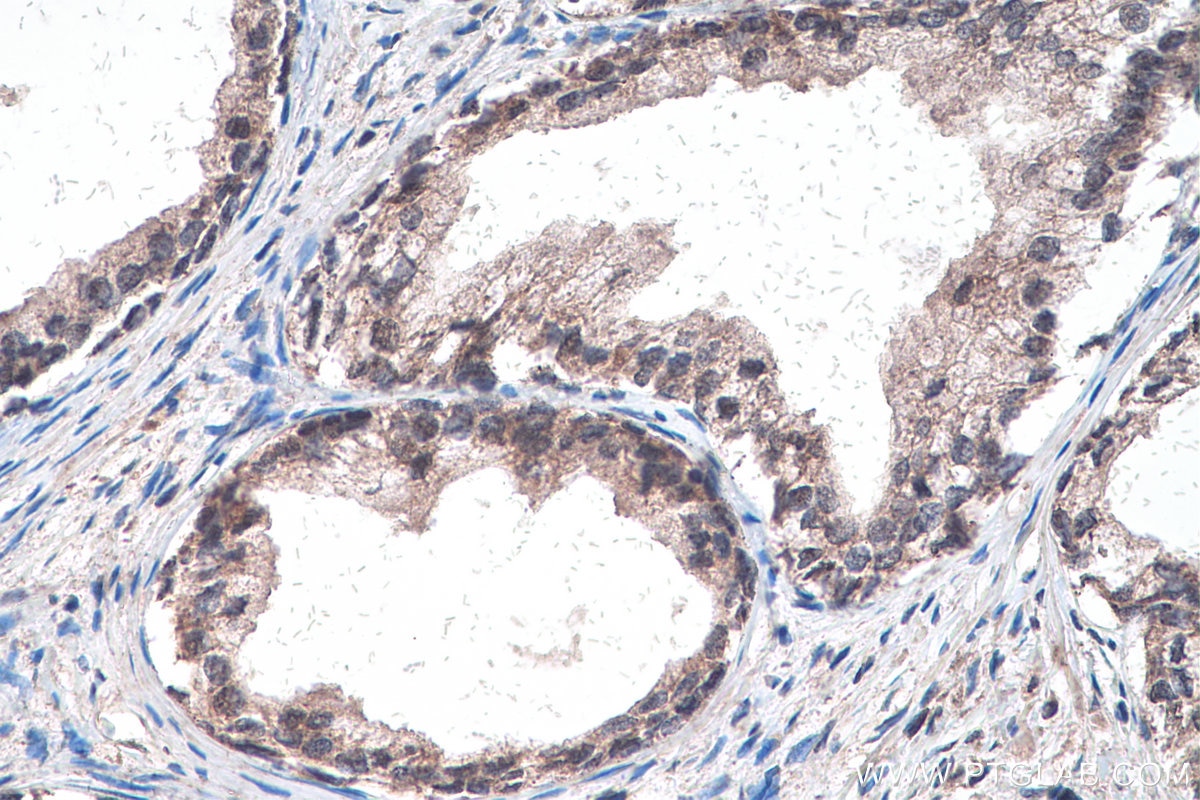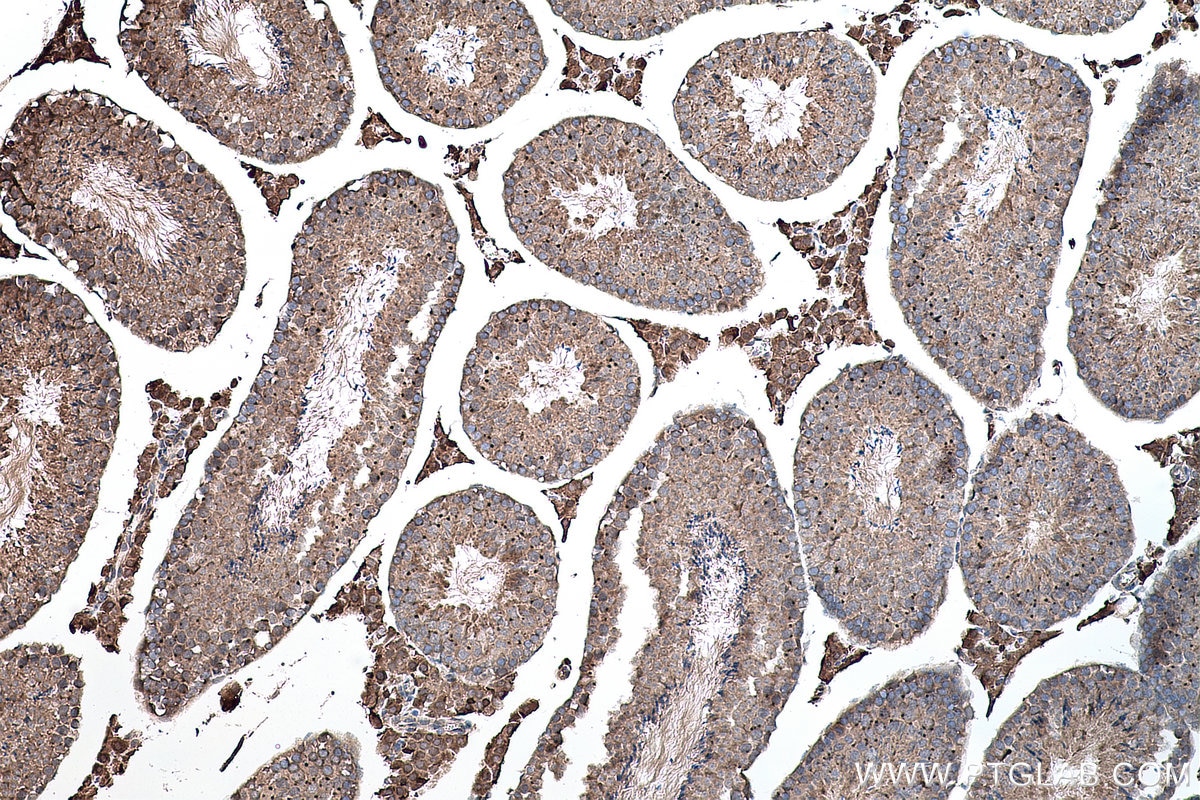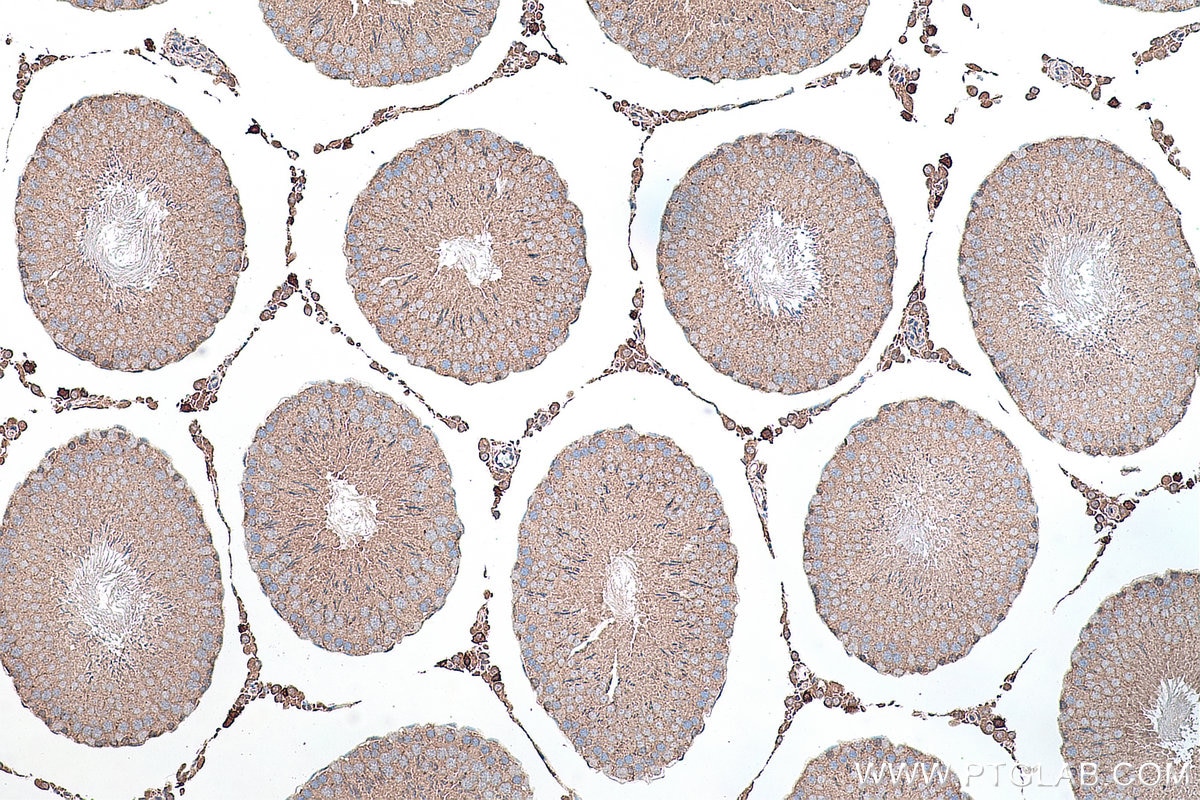GLI3 Polyklonaler Antikörper
GLI3 Polyklonal Antikörper für WB, IHC, ELISA
Wirt / Isotyp
Kaninchen / IgG
Getestete Reaktivität
human, Maus, Ratte
Anwendung
WB, IHC, ELISA
Konjugation
Unkonjugiert
Kat-Nr. : 28272-1-AP
Synonyme
Geprüfte Anwendungen
| Erfolgreiche Detektion in WB | HepG2-Zellen, SKOV-3-Zellen |
| Erfolgreiche Detektion in IHC | Maushodengewebe, humanes Kolonkarzinomgewebe, humanes Prostatakarzinomgewebe, Rattenhodengewebe Hinweis: Antigendemaskierung mit TE-Puffer pH 9,0 empfohlen. (*) Wahlweise kann die Antigendemaskierung auch mit Citratpuffer pH 6,0 erfolgen. |
Empfohlene Verdünnung
| Anwendung | Verdünnung |
|---|---|
| Western Blot (WB) | WB : 1:500-1:1000 |
| Immunhistochemie (IHC) | IHC : 1:1000-1:4000 |
| It is recommended that this reagent should be titrated in each testing system to obtain optimal results. | |
| Sample-dependent, check data in validation data gallery | |
Veröffentlichte Anwendungen
| WB | See 2 publications below |
Produktinformation
28272-1-AP bindet in WB, IHC, ELISA GLI3 und zeigt Reaktivität mit human, Maus, Ratten
| Getestete Reaktivität | human, Maus, Ratte |
| In Publikationen genannte Reaktivität | human, Ratte |
| Wirt / Isotyp | Kaninchen / IgG |
| Klonalität | Polyklonal |
| Typ | Antikörper |
| Immunogen | GLI3 fusion protein Ag28472 |
| Vollständiger Name | GLI family zinc finger 3 |
| Berechnetes Molekulargewicht | 170 aa |
| Beobachtetes Molekulargewicht | 170-190 kDa, 80-90 kDa |
| GenBank-Zugangsnummer | NM_000168 |
| Gene symbol | GLI3 |
| Gene ID (NCBI) | 2737 |
| Konjugation | Unkonjugiert |
| Form | Liquid |
| Reinigungsmethode | Antigen-Affinitätsreinigung |
| Lagerungspuffer | PBS with 0.02% sodium azide and 50% glycerol |
| Lagerungsbedingungen | Bei -20°C lagern. Nach dem Versand ein Jahr lang stabil Aliquotieren ist bei -20oC Lagerung nicht notwendig. 20ul Größen enthalten 0,1% BSA. |
Hintergrundinformationen
GLI3 belongs to the GLI C2H2-type zinc-finger protein family. GLI3 plays a role in limb and brain development. GLI3 is implicated in the transduction of SHH signal. Defects in GLI3 are the cause of Greig cephalo-poly-syndactyly syndrome (GCPS). Defects in GLI3 are a cause of Pallister-Hall syndrome (PHS). Defects in GLI3 are a cause of type A1/B postaxial polydactyly (PAPA1/PAPB). Defects in GLI3 are a cause of type IV preaxial polydactyly. Defects in GLI3 are the cause of acrocallosal syndrome (ACS). The antibody is specific to GLI3. At the molecular level, Gli3 is translated into a 190-kDa transcriptional activator (Gli3-190) that undergoes proteolytic processing into a truncated 83-kDa repressor (Gli3-83) lacking C-terminal activation domains. (PMID: 16705181)
Protokolle
| PRODUKTSPEZIFISCHE PROTOKOLLE | |
|---|---|
| WB protocol for GLI3 antibody 28272-1-AP | Protokoll herunterladen |
| IHC protocol for GLI3 antibody 28272-1-AP | Protokoll herunterladenl |
| STANDARD-PROTOKOLLE | |
|---|---|
| Klicken Sie hier, um unsere Standardprotokolle anzuzeigen |
Publikationen
| Species | Application | Title |
|---|---|---|
Bioengineered All-trans-retinoic acid suppresses rat embryo hindlimb bud mesenchymal chondrogenesis by modulating HoxD9 expression | ||
Medicine (Baltimore) miR-200c targeting GLI3 inhibits cell proliferation and promotes apoptosis in non-small cell lung cancer cells |

